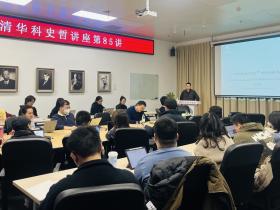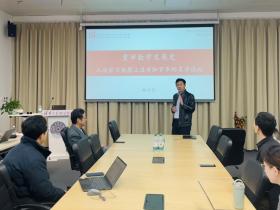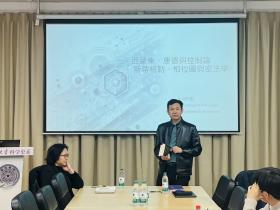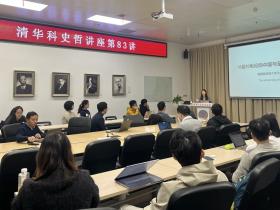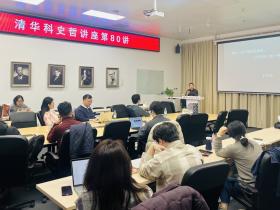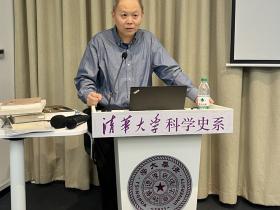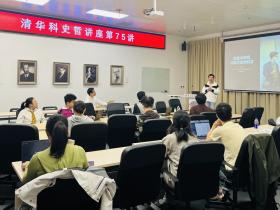On the afternoon of June 26, 2024, the Department of History of Science at Tsinghua University hosted the 69th session of the THU History and Philosophy of Science Lecture Series. The invited speaker was Professor Huaiyu Chen from the School of Historical, Philosophical, and Religious Studies and the School of International Letters and Cultures at Arizona State University. His lecture was titled "New Trends in the Study of Medieval Chinese Fauna and Flora." The event was chaired by Associate Professor Shen Yubin of Tsinghua University's Department of History of Science, with Researcher Yang Ying from the Institute of History, Chinese Academy of Social Sciences, serving as discussant. Over thirty faculty members, students, and attendees from institutions including Tsinghua University, Peking University, Renmin University of China, and the Chinese Academy of Social Sciences participated.

In recent years, the study of fauna and flora in medieval China has been influenced by critical animal studies, critical plant studies, and global history, leading to new trends in research traditionally rooted in the history of science and technology. These trends reflect a shift toward de-anthropocentrism while emphasizing the interconnectedness of botanical and zoological knowledge across regions, alongside related political and material cultural developments.
Professor Chen first outlined these emerging trends, noting that contemporary animal and plant studies increasingly focus on how fauna and flora participate in shaping human societies and help redefine humanity itself. This research also addresses environmental, ecological, and public health crises, extending traditional environmental and medical history to form a core part of the environmental humanities and medical humanities.
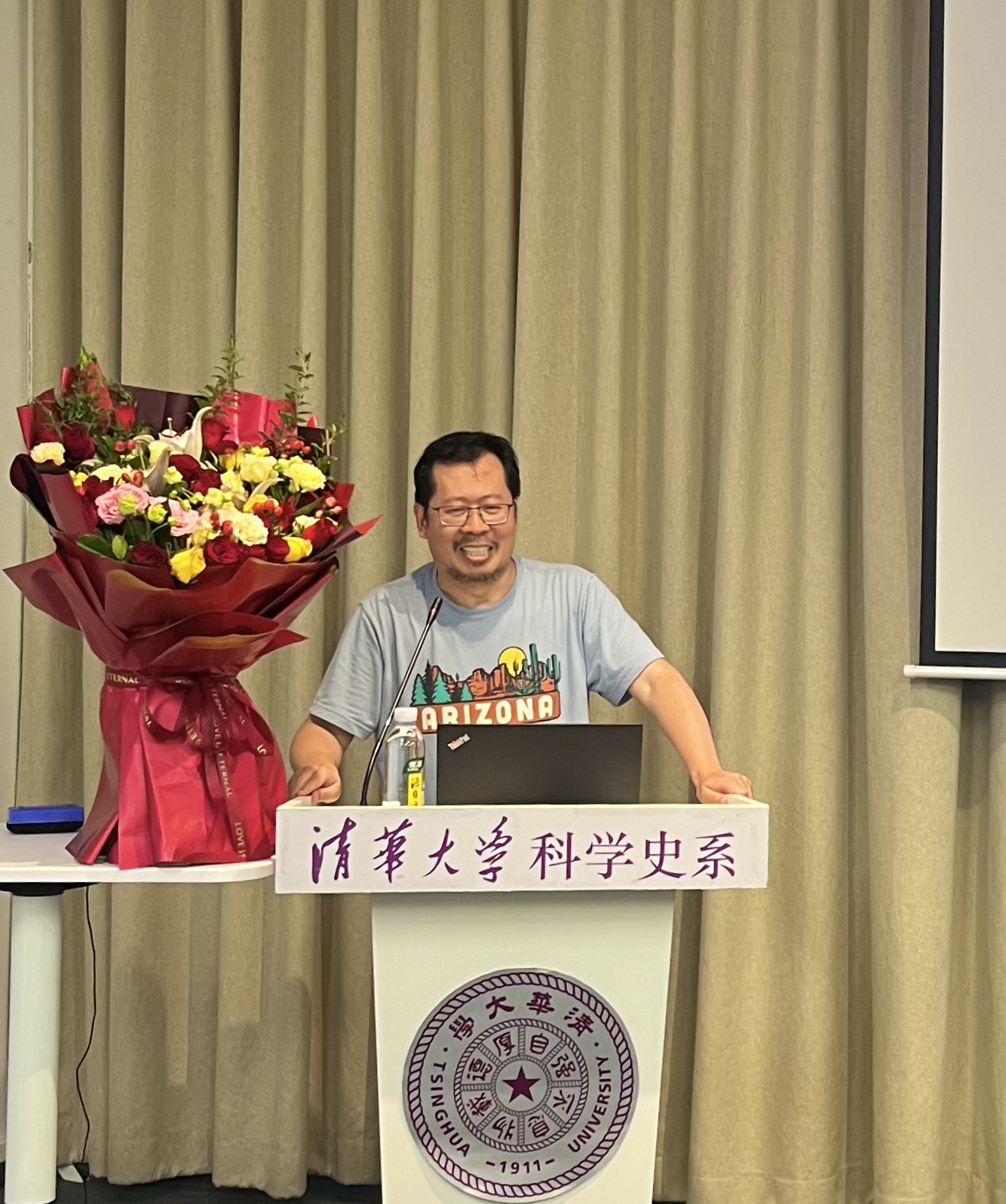
Professor Chen then presented case studies and methodologies from recent research on medieval Chinese fauna and flora. He stressed the importance of interdisciplinary and cross-cultural perspectives in examining relationships between fauna/flora and human societies. Examples included studies on how animals and plants influenced regional cultures and economies through trade and migration, as well as analyses of their symbolic roles and practical applications in religious contexts—such as Buddhist life-release rituals and Daoist alchemy.
During the lecture, Professor Chen detailed key arguments from his monographs:Animal and the Political and Religious Order in Medieval and ChinaAnimals and Plants in Chinese Religions and Science
He emphasized that such research is not merely about fauna and flora but reflects on how societies interact with them to redefine humanity. He shared compelling cases, such as the contrasting cultural symbolism of tigers in southern China and lions in northern China during the medieval period.
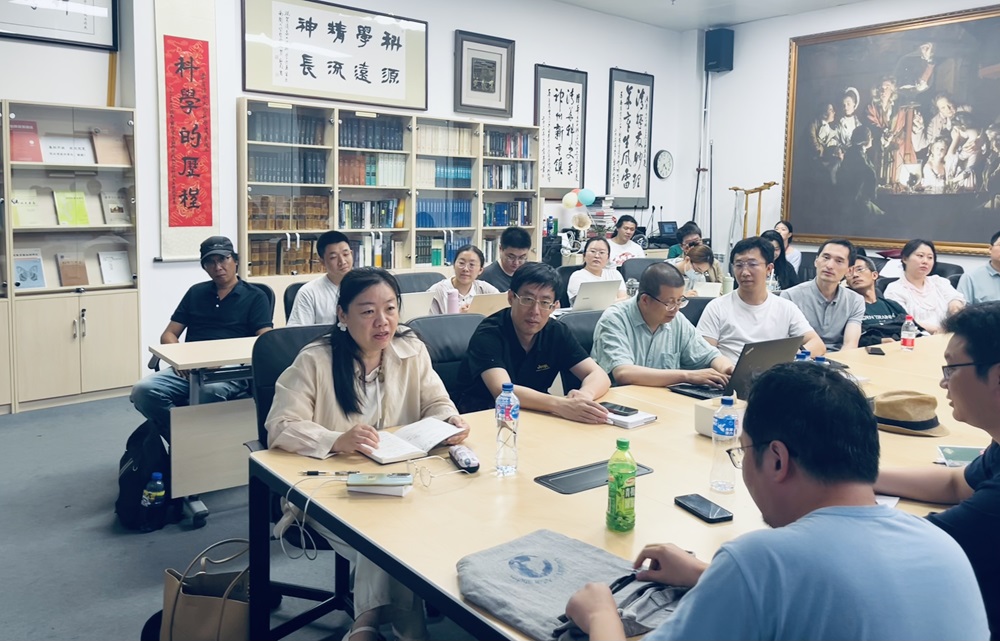
Researcher Yang Ying, in her discussion, acknowledged significant progress in the field while highlighting remaining challenges. She noted that critical animal/plant studies offer new analytical tools for understanding the historical agency of fauna and flora, and that global history perspectives are essential for tracing cross-cultural exchanges of biological knowledge in medieval China.
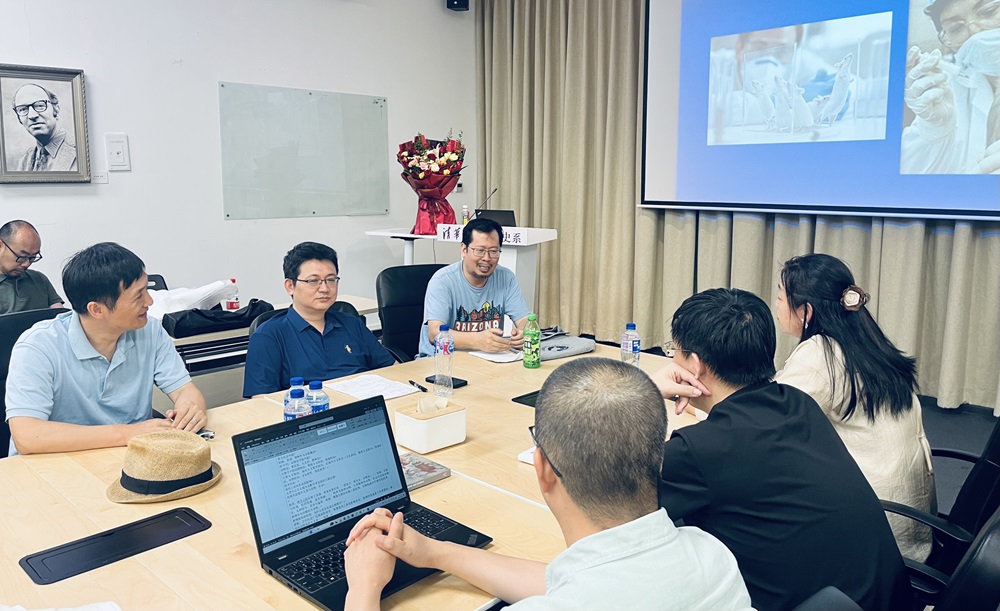
During the Q&A session, attendees engaged actively with both speakers. Questions included how to apply critical animal studies methodologies to medieval Chinese contexts. Professor Chen explained that this approach prioritizes animal subjectivity and agency, fundamentally reshaping historical interpretations. Researcher Yang added that critical plant studies similarly reveal plants' roles in political and social structures beyond their economic and cultural significance.
In closing, Professor Chen encouraged scholars to embrace these new trends for a fuller understanding of fauna and flora in history. Researcher Yang underscored the relevance of such research to contemporary environmental and public health crises. The lecture concluded with enthusiastic applause, leaving attendees inspired about future research directions.
Documented by: Chen Mingkun
Reviewed by: Shen Yubin


